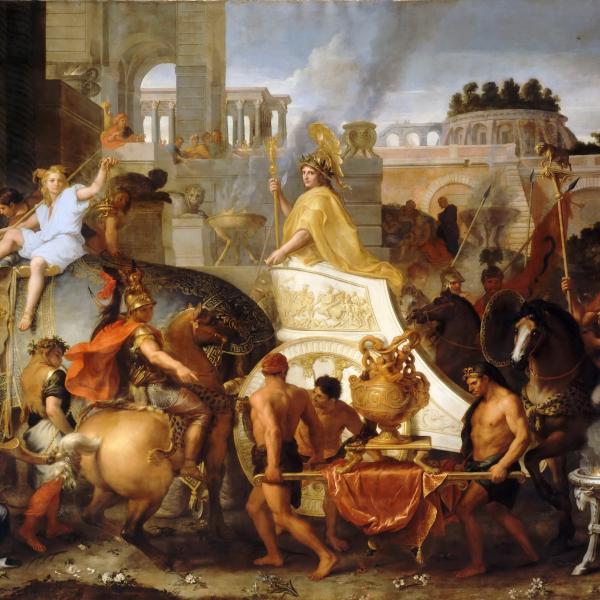by Jeffrey McCune
Associate Professor of Women, Gender and Sexuality Studies and African & African-American Studies
In Moonlight, playwright Tarell Alvin McCraney and director Barry Jenkins come together to tell a beautiful story. Set in Miami in a time “not distant from the present,” Moonlight distills the reality of black life in a time akin to the 1980s and 1990s Reagan-Bush era. Moonlight brings into the public frame everything from the “war on drugs,” living under “Reaganomics,” the perils of public education, and urban poverty and decay. Yet and still, the film uniquely juxtaposes this dark American chapter with a scene of a diverse black community — laden with black joy, black creativity and black radiance that has historically been relegated to epochs of despair. The film’s approximation of the past as much as the present allows the viewer to feel as if they have entered a world where all black is beautiful, a world where “black lives truly matter.” This film, and the world within it, starts with a simple refrain drawn from Boris Gardiner’s 1970s classic Jamaican hit, “Every Nigger Is a Star!” This opening song illuminates the true queerness of blackness within this film: unashamedly beautiful, unapologetically complex.
Moonlight begins in the middle of an urban Miami neighborhood, with a seemingly expressionless Juan and his drug-dealing companion moving from a conversation about the details of the day’s productivity to Juan’s concern for his mother’s health. As quickly as we are drawn into this caretaking between drug dealers, we witness the main protagonist, Chiron, who is called “Little” in this chapter of the film, being chased through the neighborhood by younger black kids calling him “faggot.” James Laxton’s cinematography paints this scene as epic but also emphasizes the size of the little children as the catalyst for the necessity to belittle others with a gendered sexual epithet. In this moment, the camera tells us that what would become the sexual reality of Chiron was much earlier an attachment made through a gendered script that devalues his small size and understated demeanor — understanding all difference as queerness.
It is this idea of difference — particularly blackness as queerness — that is signature in this film. However, difference — and even “deviance” in this film — is not deemed deficient.
The oft-cited scene where Juan literally teaches Chiron how to tread water becomes a moment where we witness two black men defy the discourse of distance too often used to define black male bodies. This signature moment crafts a closeness — ironically charged by Juan’s distinct masculinity (as painted by his chiseled body and hard aesthetic) — juxtaposed with the remarkable silence and fear of Chiron, as queerly sized and queerly placed in the world that seemingly rewards only Juan’s comportment. This joining together — to navigate the waves, so to speak — is a symbolic moment where closeness undoes all that the narratives of their bodies are supposed to bring forth.
Moonlight makes clear, if anything, that in a world always in flux and unstable due to sociocultural and economic conditions, nothing and nobody “just is.” In fact, McCraney and Jenkins make every character more than their cultural scripts allow them to be. Juan the drug dealer saves Chiron from the “faggot”-taunting kids, partnering with his girlfriend (played by Janelle Monáe) to adopt Chiron as their child and turn their house into his “home away from (crack)home.” His crack-addicted mother, who neglects Chiron daily, is attentive to his attendance in school and later professes a love in his adulthood that he (we) had not known previously. Even Chiron, who seemingly throughout the film is adverse to touch and intimacy, finds himself able to be “touched” by his longtime friend, Kevin, beachfront and buzzed by marijuana and masturbatory mannishness.
Though, it is important to note: This is no coming-out story; it is a tale of intimacy, presence and absence. And, later, it is Chiron who tells us that Kevin’s touch became his index for deeper intimacy and love, which he carried with him into adulthood. Altogether, these moments reflect how the world McCraney and Jenkins produce is one that defies rigid notions of singular identities or profiles, and instead understands the richness in black complexity and contradiction, as well as the deep terrain of black love and intimacy.
The world carved by Jenkins and McCraney in Moonlight is magical: black magic riddled with funk. Throughout the film, Nicholas Britell’s musical arrangement and composition undergirds the complex narrative, adding another layer to its rich landscape. Often utilizing the wind and waves as accompanying voice, the Moonlight’s music recalls McCraney’s adoration for Afro-Caribbean spiritual traditions, a signature and consistent return in his repertoire of plays.
Here, in the world of Chiron — a name that gestures toward a Greek centaur of wisdom and knowledge — we see the echo of ancestral greatness made more clear in the turn of the Greek to what may be first thought to be an urban name in black vernacular. McCraney’s use of “Chiron,” coupled with the repeated sonic winds and waves, reminds us of the island on which all characters remain, individual and collective.
Moonlight richly captures many of the shared and individual truths about black life, mapping an island where all have the potential to reach their fullest selves — protected by the divine, ancient presence of those deities that protect and guide. The omniscience of this sonic presence within Moonlight reflects a choice to not offer the classic state of sorrow always infused into urban representation, but rather to mark what is consistent in black liminal space: energies that protect, sustain, preserve and empower.
In Moonlight, Jenkins and McCraney offer deep black intimacy as that which heals, saves and keeps Chiron. It is this magical human gift that Chiron — and every young black boy or man that he represents in part or whole — sees as the key to his evolution and development. Throughout this film we see intimate encounters between black people, uniquely absent of white presence — tilting the world into the unseen and the unknown. Moonlight’s black world — rich with possibility and promise, staged a bit outside the “real” — offers us a peek into a universe where “Chiron,” “Little,” “Black” and so many others live in what is perceptually dark or even dangerous but still see and embody what is light and beautiful.




